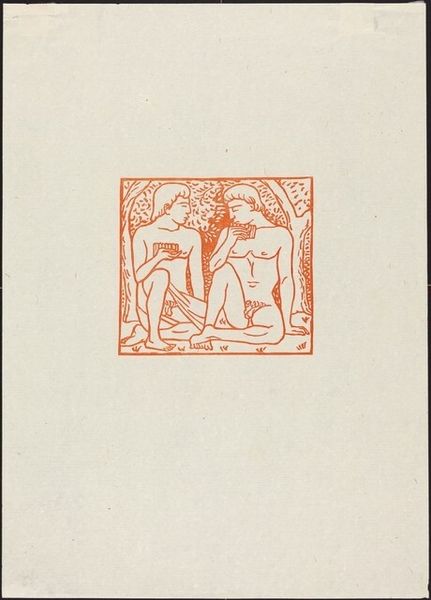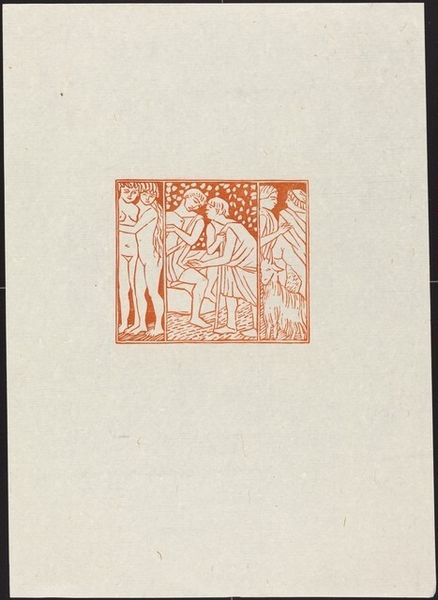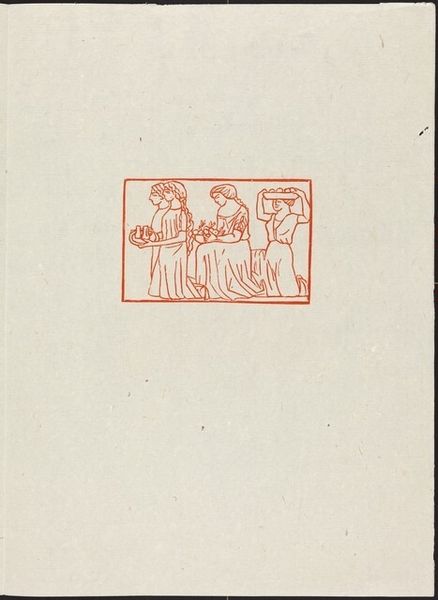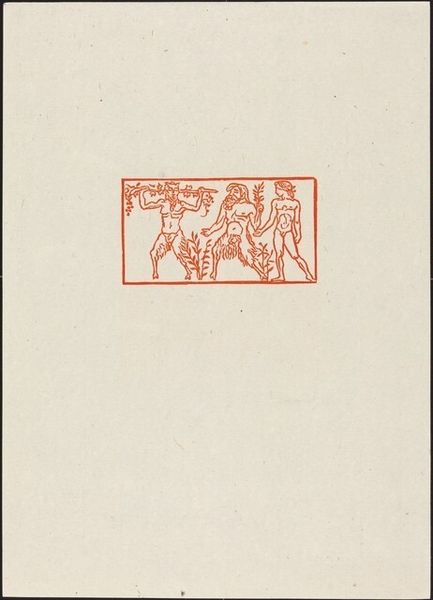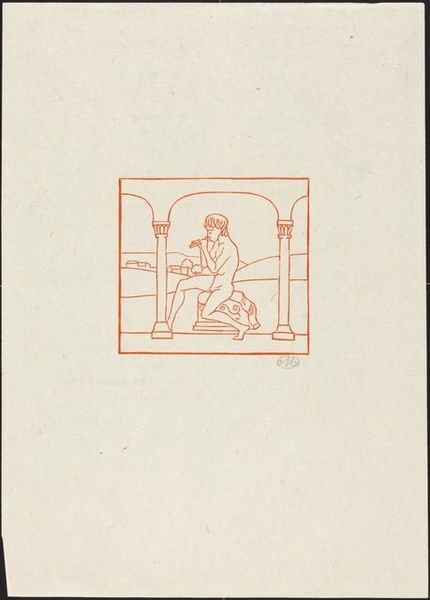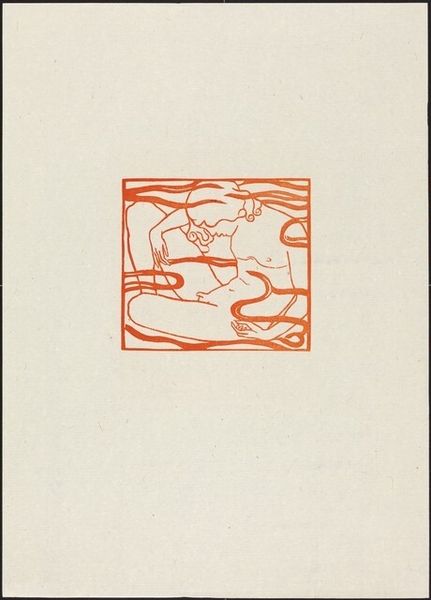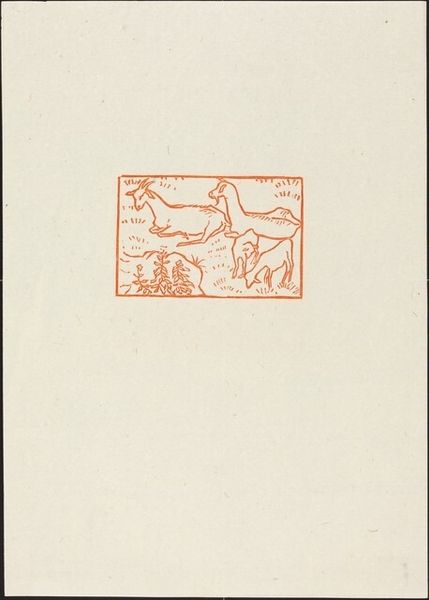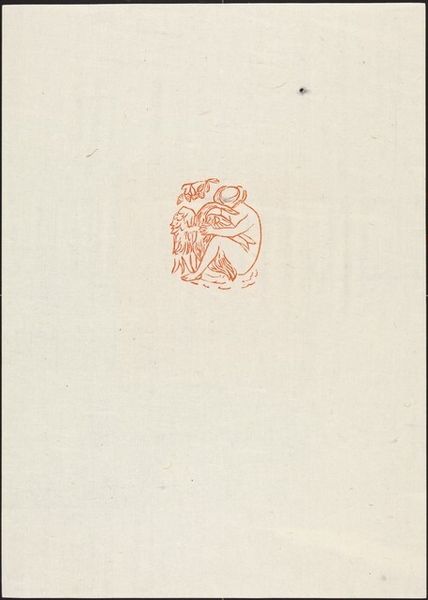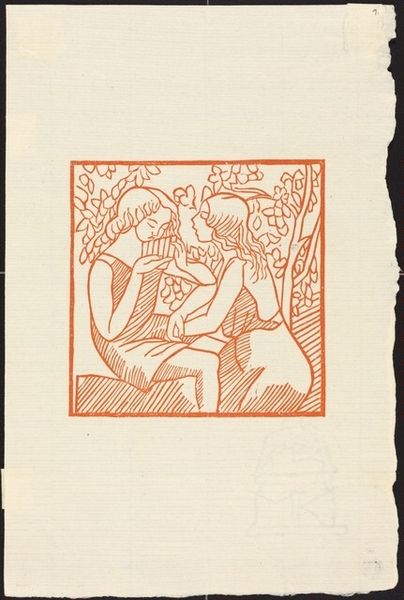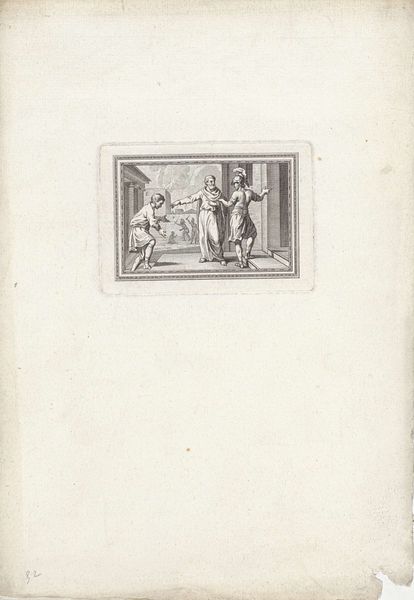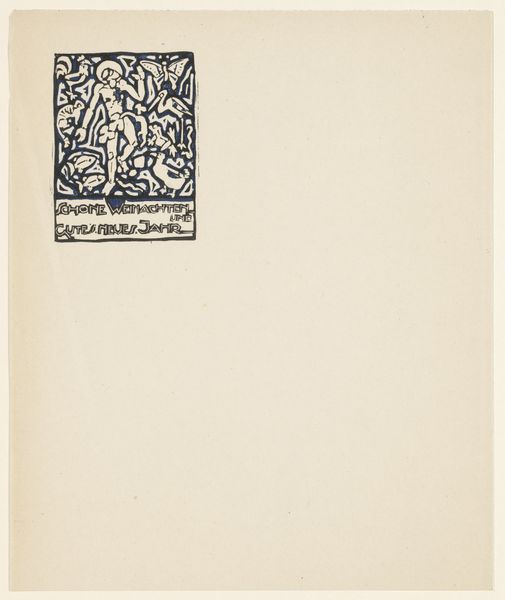![Fourth Eclogue: Lucina Smiles on Her Boy (En tête de la quatrieme eglogue) [left] by Aristide Maillol](/_next/image?url=https%3A%2F%2Fd2w8kbdekdi1gv.cloudfront.net%2FeyJidWNrZXQiOiAiYXJ0ZXJhLWltYWdlcy1idWNrZXQiLCAia2V5IjogImFydHdvcmtzL2YyOTA1ZTAzLWRhNDMtNDA2Yi1hODRkLTY3NTFhMTY5NjkzZC9mMjkwNWUwMy1kYTQzLTQwNmItYTg0ZC02NzUxYTE2OTY5M2RfZnVsbC5qcGciLCAiZWRpdHMiOiB7InJlc2l6ZSI6IHsid2lkdGgiOiAxOTIwLCAiaGVpZ2h0IjogMTkyMCwgImZpdCI6ICJpbnNpZGUifX19&w=1080&q=75)
Fourth Eclogue: Lucina Smiles on Her Boy (En tête de la quatrieme eglogue) [left] Possibly 1926
0:00
0:00
print, etching, woodcut
# print
#
etching
#
figuration
#
woodcut
#
line
#
history-painting
#
northern-renaissance
Copyright: National Gallery of Art: CC0 1.0
Curator: Aristide Maillol’s “Fourth Eclogue: Lucina Smiles on Her Boy” is thought to have been produced around 1926, existing as both an etching and a woodcut print. There's a quiet dignity to the scene. Editor: It has the stark simplicity of an early Renaissance print. That red-orange color – almost like faded terracotta – contributes to that archaic feeling, grounding the subject with materiality. How was this terracotta-like tone achieved in the printing? Curator: Maillol seems deeply engaged with line here. See how the figures are formed by contour alone, their inner volumes suggested rather than fully realized. Note, too, the subtle differences in line weight, providing an almost sculptural presence to the group. Editor: What’s most fascinating is this nod to early woodcuts and their production methods, especially how the dense, linear work references the material properties. The way that those clean lines would need skillful carving and the way it all results in a crisp image. Curator: Absolutely. The composition adheres to a distinct structure. Observe the careful arrangement of the figures, balanced on a simple plane. We have the Madonna and child paired with the figure presenting gifts on the right. The overarching theme revolves around maternal love. Editor: Right. The lines don’t hide the effort or time of production, a physical process that, as a result, adds to the feeling. You can really see and feel how the Renaissance craftsmen thought about what they were trying to do. The emphasis becomes about how we assign value and about art's production process as much as it does to history and subject. Curator: Looking closely at this work allows one to explore a convergence between figuration, classical themes, and that distinct early print aesthetic. Editor: It has really forced us to think about what this era represents regarding production values versus what's created now through very different technology. Food for thought.
Comments
No comments
Be the first to comment and join the conversation on the ultimate creative platform.


